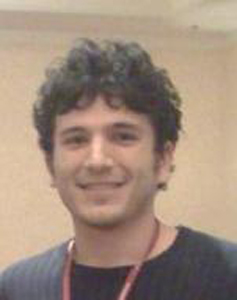Program Information
Identification of High Quality Machine-Robust CT Image Features
L Hunter*, F Stingo, S Kry, M Martel, H Choi, L Court, MD Anderson Cancer Ctr., Houston, TX
WE-G-500-1 Wednesday 4:30PM - 6:00PM Room: 500 BallroomPurpose: To identify non-small cell lung cancer (NSCLC) CT image feature sets that are reproducible, non-redundant, and informative across multiple CT machines. Such feature sets will be ideal for modeling and will yield increased generality and robustness to machine variation.
Methods: Non-contrast-enhanced, test-retest CT image pairs were obtained from 56 NSCLC patients imaged on three CT machines from two institutions. 328 quantitative image features were extracted from each tumor based on its geometry, intensity histogram, absolute gradient image, co-occurrence matrix, and run-length matrix. Feature reproducibility was quantified using the test-retest data and the concordance correlation coefficient (CCC). The Dice similarity coefficient (DSC) and the Jaccard index (JI) were used to quantify reproducible feature set agreement between machines. Multi-machine reproducible feature sets were created by taking the intersection of individual machine reproducible feature sets. Redundant features were removed through hierarchical clustering based on the average correlation between features across multiple machines.
Results: Across machines, the average percentage of features that were reproducible (CCC>0.90) was highest for 4D-CT average images (92.5%), intermediate for 4D-CT end-exhale images (73.0%), and lowest for 3D-CT breath-hold images (61.0%). For 4D-CT, end-exhale image features were relatively machine-sensitive (DSC = 0.71, JI = 0.55), and average image features were relatively machine-insensitive (DSC = 0.90, JI = 0.87). Multi-machine reproducible and non-redundant feature sets were identified for 4D-CT average images, 4D-CT end-exhale images, and 3D-CT breath-hold images. Hierarchical clustering confirmed feature set informativeness: 55 out of 56 test-retest images were correctly paired using only their reproducible, non-redundant feature set values.
Conclusion: Image feature reproducibility was machine-sensitive. High quality machine-robust feature sets were identified for each image type. Compared to end-exhale 4D-CT and breath-hold 3D-CT, average 4D-CT derived image features showed superior multi-machine reproducibility and are the best candidates for clinical correlation.
Contact Email:


